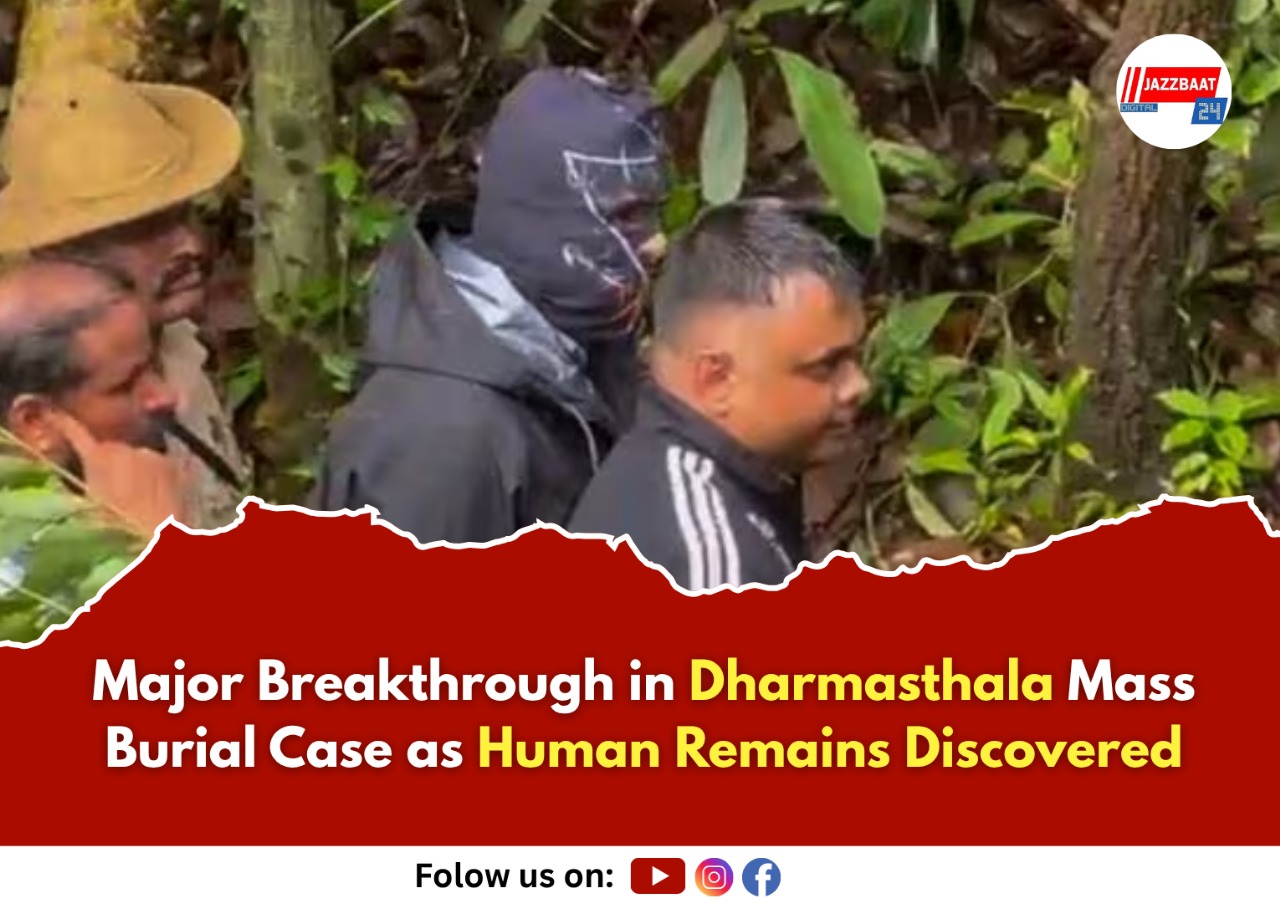
First concrete evidence emerges after three days of excavation at suspected burial sites
In a significant development that has sent shockwaves across Karnataka, investigators have unearthed human skeletal remains at one of the suspected mass burial sites in Dharmasthala, marking the first major breakthrough in a case that has gripped the state for weeks.
The Special Investigation Team (SIT) made the discovery on Thursday at the sixth excavation site near the Netravati river, exactly where a former temple sanitation worker had indicated bodies were buried. The remains, believed to be of a male, were found at a depth of three feet after three days of painstaking excavation work.
This discovery represents the first tangible evidence in a case built on explosive allegations from a whistleblower who claims he was forced to bury multiple bodies over nearly two decades. The former sanitation worker alleges that between 1995 and 2014, he was repeatedly ordered by his superiors to bury bodies of women and girls who appeared to have been sexually assaulted.
The breakthrough comes after frustrating initial attempts yielded no results. SIT teams had previously excavated five other sites without finding human remains, leading to questions about the credibility of the allegations. However, the discovery at Spot 6 has vindicated the investigation's direction and provided investigators with crucial forensic evidence.
The excavation process has been challenging due to the area's proximity to the Netravati river, with continuous rainfall causing waterlogging that required pump sets to drain water from the dig sites. What started with manual labor has now progressed to using heavy machinery, including Hitachi excavators, to speed up the process.
The case first came to public attention in late June when advocates representing the anonymous whistleblower held a press conference detailing the shocking allegations. The former worker, whose identity remains protected for safety reasons, filed his complaint with Dharmasthala police on July 3, leading to the formation of the SIT on July 19.
According to the complainant's account, 13 suspected burial sites have been identified near the temple town's bathing ghats. The whistleblower has reportedly indicated that the ninth location is expected to yield the most significant findings, claiming it contains the largest number of alleged burials.
The investigation has been conducted under tight security, with armed personnel stationed at each identified site and snake fences installed in the dense forest terrain. Officials from revenue, forest, and other departments have been working alongside the SIT, while forensic experts and medical personnel oversee the evidence collection process.
The discovery has intensified scrutiny on one of Karnataka's most revered religious destinations. Dharmasthala, known for its ancient temple and philanthropic activities, attracts millions of devotees annually. The allegations have cast a shadow over the temple town's reputation, though investigations continue to determine the full extent of the alleged crimes.
As forensic teams begin analyzing the recovered remains to determine identity and cause of death, the SIT prepares to continue excavations at the remaining seven identified sites. The investigation's outcome could have far-reaching implications for the temple administration and raise serious questions about oversight at religious institutions across the state.
The case represents one of the most serious criminal investigations in Karnataka's recent history, with authorities promising a thorough probe regardless of the individuals or institutions involved.